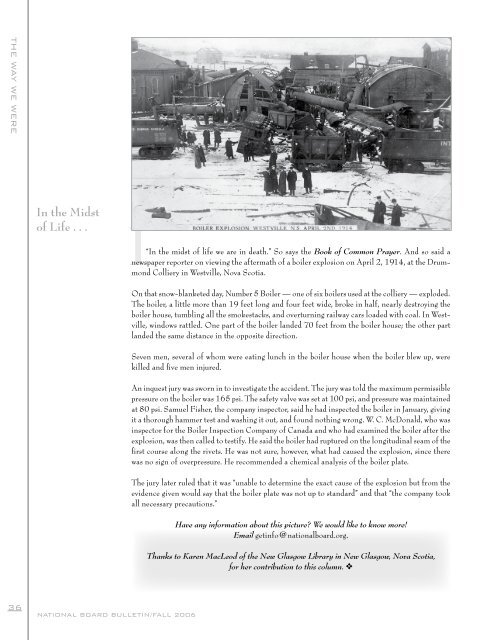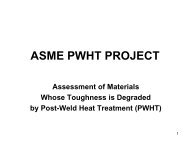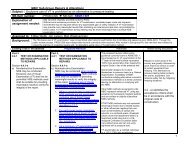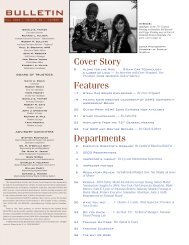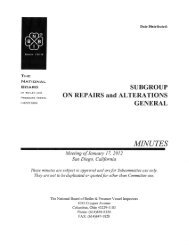bulletin - The National Board of Boiler and Pressure Vessel Inspectors
bulletin - The National Board of Boiler and Pressure Vessel Inspectors
bulletin - The National Board of Boiler and Pressure Vessel Inspectors
Create successful ePaper yourself
Turn your PDF publications into a flip-book with our unique Google optimized e-Paper software.
THE WAY WE WERE<br />
36<br />
In the Midst<br />
<strong>of</strong> Life . . .<br />
NATIONAl BOARD BUllETIN/FAll 2006<br />
I“In the midst <strong>of</strong> life we are in death.” So says the Book <strong>of</strong> Common Prayer. And so said a<br />
newspaper reporter on viewing the aftermath <strong>of</strong> a boiler explosion on April 2, 1914, at the Drummond<br />
Colliery in Westville, Nova Scotia.<br />
On that snow-blanketed day, Number 5 <strong>Boiler</strong> — one <strong>of</strong> six boilers used at the colliery — exploded.<br />
<strong>The</strong> boiler, a little more than 19 feet long <strong>and</strong> four feet wide, broke in half, nearly destroying the<br />
boiler house, tumbling all the smokestacks, <strong>and</strong> overturning railway cars loaded with coal. In Westville,<br />
windows rattled. One part <strong>of</strong> the boiler l<strong>and</strong>ed 70 feet from the boiler house; the other part<br />
l<strong>and</strong>ed the same distance in the opposite direction.<br />
Seven men, several <strong>of</strong> whom were eating lunch in the boiler house when the boiler blew up, were<br />
killed <strong>and</strong> five men injured.<br />
An inquest jury was sworn in to investigate the accident. <strong>The</strong> jury was told the maximum permissible<br />
pressure on the boiler was 165 psi. <strong>The</strong> safety valve was set at 100 psi, <strong>and</strong> pressure was maintained<br />
at 80 psi. Samuel Fisher, the company inspector, said he had inspected the boiler in January, giving<br />
it a thorough hammer test <strong>and</strong> washing it out, <strong>and</strong> found nothing wrong. W. C. McDonald, who was<br />
inspector for the <strong>Boiler</strong> Inspection Company <strong>of</strong> Canada <strong>and</strong> who had examined the boiler after the<br />
explosion, was then called to testify. He said the boiler had ruptured on the longitudinal seam <strong>of</strong> the<br />
first course along the rivets. He was not sure, however, what had caused the explosion, since there<br />
was no sign <strong>of</strong> overpressure. He recommended a chemical analysis <strong>of</strong> the boiler plate.<br />
<strong>The</strong> jury later ruled that it was “unable to determine the exact cause <strong>of</strong> the explosion but from the<br />
evidence given would say that the boiler plate was not up to st<strong>and</strong>ard” <strong>and</strong> that “the company took<br />
all necessary precautions.”<br />
Have any information about this picture? We would like to know more!<br />
Email getinfo@nationalboard.org.<br />
Thanks to Karen MacLeod <strong>of</strong> the New Glasgow Library in New Glasgow, Nova Scotia,<br />
for her contribution to this column. v


